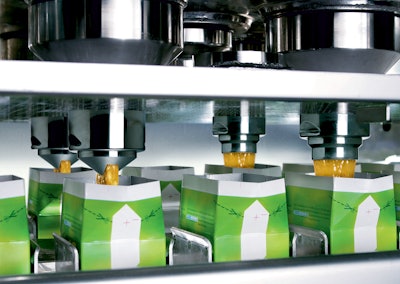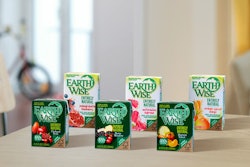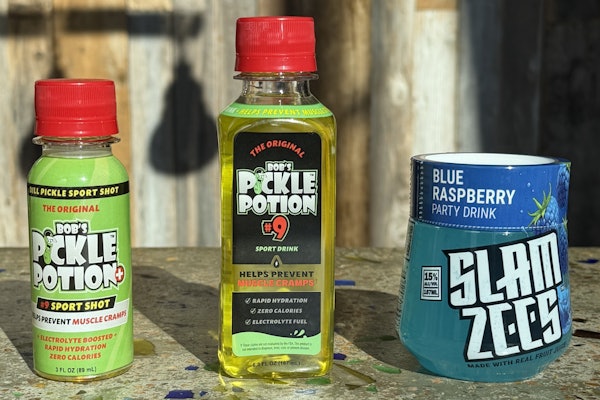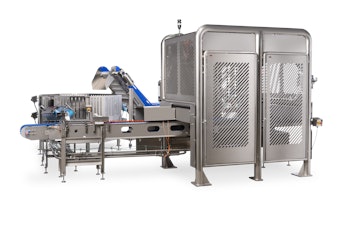The future of food packaging rests on the twin pillars of yesterday and today. So if we want to know what the future of food packaging will look like, let’s see where we’re at now.
Packaging exhibitions and the packaging press tout a number of technologies that bear watching. Nano technologies, pure BPA-free polymers, plant-based polymers, biodegradable and compostable plastics, ionizing radiation, and high-barrier plastics to replace metal and glass—these are a few of the “breakthroughs” we read about. But will these prove to have any more staying power than some of the “game changers” we read about in the past? Remember polyethylene naphthalate (PEN), LetPak, Rigello, Jebco pouches? Where are they now?
That’s not to say all of yesterday’s “revolutions” were without staying power. Today’s consumer matter-of-factly accepts such things as reclosable zippers, stand-up flexible pouches, retort pouches and trays, aseptic cartons, barrier plastic cans, microwave susceptors, contoured metal cans, portion-control coffee brewing, and polyester bottles—even though each of these was once plenty revolutionary in its own right. What’s important to remember is that they succeeded in the marketplace because they were developed by dedicated and focused consumer-oriented scientists and technologists and introduced as systems, not just isolated package structures.
But enough about the past. What’s driving the future?
One thing that has changed significantly revolves around information. At the front end of today’s food packaging development cycle is more information than food packaging technologists of the past could ever have dreamed of. Even consumer psychographics—data on how people think, act, or believe—is being explored to better shape packaging, to present us with greater and greater convenience to go along with the safety and quality we already expect.
If all this research is saying anything loud and clear, it’s this: The closer to fresh the better. That’s why extended refrigerated shelf life (ESL) is in such demand. Applying the principles of hurdle or combination technologies, the perimeter of the retail food store is being deluged with packaged ESL chocolate milk, cheese sticks, bakery goods, prepared entrées, soups, desserts, salads, and more. Shelf lives of weeks and even months in some cases are imparted to packaged foods by reducing oxygen within the barrier packages and controlling distribution temperatures. Concern over the safety of some of these food products is being minimized by much greater oversight by both processors and marketers. And the rigid application of refrigeration and oxygen reduction together are offering retailers and consumers food that often matches the appearance, flavor, and mouth feel of chef prepared dishes. ESL throughout retail is sure to expand.
Clean labels
Complementing the consumer’s desire for ESL is a strong preference for a “clean” label, that is, the absence of chemicals or preservatives. ESL minimizes the use of preservation technologies. Because ESL food products do not generally require rigorous preservation treatment, the package structure can be relatively light-weight plastic—thus better sustaining the planet. ESL products are usually very easy for the eater to prepare, often in the microwave oven, and the packaging also acts as a serving dish that is readily disposed of. The consumer’s insistence on freshness, quality, and convenience has necessitated larger display platforms; it’s also brought about higher suggested retail returns. These improved profit margins permit the use of more costly high-barrier packaging materials that are required for reduced-oxygen foods and better controlled-permeation structures for respiring foods such as fresh cut fruit.
The notion of reduced-oxygen food packaging is spreading rapidly and without much fanfare. Oxygen, of course, is one of the key participants in aerobic microbiological growth, oxidative rancidity, browning, and staling, and its removal from the package has been a preservation strategy for a century or more. Common mechanical, steam, or carbon dioxide flush, or the infusion of gaseous or liquid nitrogen, can reduce the oxygen to single-digit percentage levels—or, with supplementation, to parts per million. But packaging methods today only remove the oxygen from the headspace and not from the food mass, leaving dissolved, entrained, and entering oxygen to react adversely with the contents. Unfortunately, none of the commercial oxygen scavengers or scavenger operating systems are capable yet of grossly reducing oxygen. In-depth studies on oxygen-sensitive food products such as juices and beer have demonstrated that reducing all the oxygen present to parts per billion concentrations significantly reduces the undesirable biochemical and enzymatic changes in the food. Shelf life can be extended to months and even years with excellent package barrier structures—which translates into superb, quality retention for commercial distribution periods.
Micro-oxygen processing and packaging
Bringing oxygen to micro levels of concentration to reach these shelf life goals requires integration of processing and packaging. Recent work with beer is a good example. Micro-oxygen technology will soon be applied commercially to high-acid oxygen-sensitive foods and beverages because this new technology delivers the best of packaged food quality. And soon after, when the use of micro-oxygen technology on low-acid foods such as entrees and side dishes has been evaluated, these foods will join their high-acid friends in micro-oxygen package formats that are safer, better, and more convenient for consumers. In the beginning, watch for micro-oxygen packaged foods in ESL format. Shelf stable varieties will follow.
Although micro-oxygen technology is one indispensable component as we broaden the availability of ESL food packaging, food technologists have other tools at hand, too. Elements such as ultra high-pressure processing, aseptic processing and packaging, and thermal processing will also contribute to what must become combination technologies. The application of sterilization heat coupled with clean packaging has presented ESL beverages to the market. Next we can expect to see post-packaging pasteurization to emerge. It involves thermal processing temperatures not as severe as those used in sterilization, and it can provide extended refrigerated shelf life to soups, main courses, side dishes, and so on. Compared to pasteurization, conventional thermal heating—in hot air convection ovens or in a steam vessel—is not easily done because temperature extremes and dwell times too often soften the plastic packaging being used. So look for microwave pasteurization to come on strong in the near future.
Several months ago in this very publication, Packaging World, a piece appeared describing and depicting microwave pasteurization of entrees by a firm out of Sweden named MicVac. This is a good example of how hurdle technologies can come into play. It wasn’t just microwave power that produced the desired shelf life. The processing and packaging integrated a number of technologies to provide 45 + days of refrigerated shelf life—far beyond the approximately 20 days found in the U.S. Hermetically sealed microwave-transparent heat-seal-lidded barrier flat trays equipped with vented lids are conveyed through a tunnel into which 2450 mHz microwave energy is radiated to achieve complete penetration into the food mass. The microwave energy heats the food and the water and generates steam within the package to bring about a sufficient bacteria kill. The steam vent, analogous to the steam-release devices on microwave steamable frozen foods, releases excess pressure during the less than ten-minute heating cycle, a dwell time markedly shorter than applying conventional/conduction heating. Subsequent to heating, the package goes through a spiral cooler to arrest the cook cycle.
International Packaging Systems in Switzerland has also come up with a microwave pasteurization technology. Called Micropast, it includes a steam venting valve plus nitrogen injection—another step towards achieving the reduced-oxygen state discussed above. No microwave pasteurization installations are identifiable in the U.S. yet. But the momentum that comes with European successes combined with the advent of Microwave Assisted Thermal Sterilization (MATS) makes me think we are on the verge of a revolution in thermal preservation of foods.
More on MATS
Developed during the 1960s in Sweden and originally referred to as “Multitherm,” MATS has been redeveloped and will be commercially introduced in the U.S. next year. Principles of the new and the old are essentially the same: food is packaged in hermetically sealed microwave-transparent barrier trays that are conveyed through a pressurized hot-water tunnel that can reach sterilization temperature. Combining the elevated temperature brought about by the hot water with the incident 915 mHz -microwave energy and the steam generated within the package can sterilize the product in less than ten minutes. Heating is followed by pressure cooling to stop the cook process. Product quality is remarkably like fresh for cooked salmon, fried rice, macaroni and cheese, cooked potatoes, and even omelets—even after ambient temperature storage.
Taking this technology a step farther, might the MATS systems at Washington State University also be applied for lower-heat pasteurization? Coupled, of course, with chilled distribution, could this be the master food packaging innovation of tomorrow? Other developments recently announced could move us even farther. In-line continuous microwave sterilization of pumpable foods in a tube followed by aseptic packaging is one example. This is currently underway with sweet potato puree produced and packaged by Yamco LLC in Snow Hill, NC. Other uses might include sauces, soups, baby foods, and even macaroni and cheese. Watching these complementary technologies coming together like this can only make me wonder if we’re finally in a position to capitalize on the considerable potential of microwave energy to profoundly improve the way we approach food preservation and packaging.
There’s also progress to report in aseptic processing and packaging of food particulates, notably by Sig Combibloc and its associates. So far only a limited number of particulate-containing soups have reached our shelves, and all are thermally processed using conventional formats. Could microwave energy have a role to play here? It might be perfectly suitable for in-line microwave plus aseptic packaging of consumer-friendly and microwavable cups and bowls of portion-packed foods.
Some clever folks are even looking at the idea of linking microwave thermal treatment with Pressure Assisted Thermal Sterilization (PATS) to further reduce the damage to food flavor and nutrients that comes with conventional thermal processing. While they’re at it, they might add micro-oxygen technology plus aseptic packaging to achieve either ESL status or true unrefrigerated shelf stability at ambient temperatures. It’s this kind of technology combinations that will bring tomorrow’s consumers the packaged foods they want.
Finally, don’t forget about our old hurdle technology friend known as active packaging. Oxygen scavengers, odor scavengers, aroma delivery to make product smell better upon opening, and antimicrobials to control microorganisms—all of these active packaging technologies have been talked about and, in some cases, commercialized to some extent. Now oxygen scavengers are being incorporated into the plastic packaging itself by Multisorb, Cryovac, and CSP Technologies. Elsewhere
• the world of antimicrobials is being introduced to chlorine dioxide precursors that minimize adverse secondary discoloration,
• allyl isothiocyanate (AIT) is being used to definitively destroys pathogenic microorganisms on meat surfaces,
• silver salts are being sprinkled into paper for fresh meat handling.
Like other hurdle technologies discussed here—reduced-oxygen technology, reduced-heat solutions, microwave assists, aseptic packaging of particulates—it would appear that active packaging is about to make an important contribution to food packaging in the future. It’s all about striking the right balance between daring technology and judicious hurdling.
Aaron L. Brody is a member of the Packaging Hall of Fame and a senior associate at Packaging & Technology Integrated Solutions, a division of HAVI Global Solutions Direct, LLC; he can be reached at [email protected].

























